AUTOMATED TYRE MANUFACTURING: NO TURNING BACK
- By Sharad Matade & Juili Eklahare
- October 14, 2022
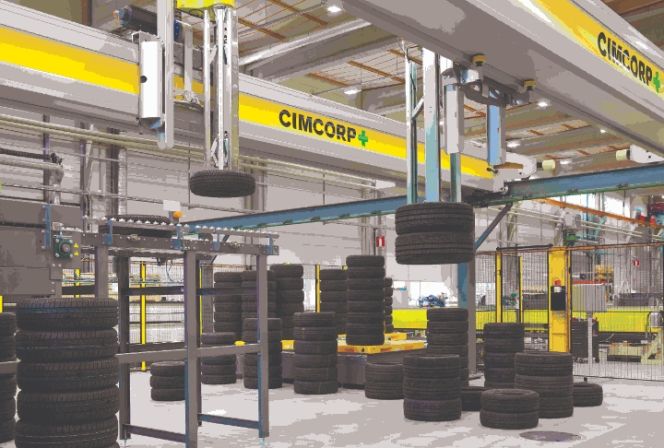
There couldn’t be any industry that isn’t implementing, or at least knowing about, automation. And if there’s actually one, then it has probably been living under a rock. The tyre industry has already opened its doors to automation, and this helps make tyre manufacturing more sophisticated and reliable. The tyre manufacturing process itself has been experiencing constant changes – from different tyre sizes and constructions to targeting less usage of energy. Automation must be on every tyre company’s to-do list, if it hasn’t adopted it already. Don Heelis, Sales Manager, Cimcorp, gave Tyre Trends more insights on the different aspects of automation in the tyre industry and its absolute requirement, when we met him at the Tire Technology Expo 2022 in Hannover, Germany. Read on…
The philosophy of tyre manufacturing has changed dramatically. A part of the change in that philosophy relates to automation implementation in the tyre manufacturing process. However, we also find more technical perspectives being adopted and taken into account at new, modern tyre factories today.
This technical perspective can be considered to be coming from a few different areas, one of them certainly being from the actual production part of the tyre factory. Therefore, with production machinery, mixers, extruders and tyre building machines, the level of technology being implemented in these processes is increasing. Moreover, these processes are getting more sophisticated.
The other aspect of this is integrating the production across all the different areas (another factor for the dramatic change in the modern tyre factory). In the past, the different areas of production were not necessarily well connected. However, today we see them getting connected a lot more – and this is being driven and enabled by technology.
This is where companies like Cimcorp come in – who happen to provide material handling and automation technology so that different tyre manufacturing processes are better integrated.
Explaining this, Don Heelis, Sales Manager, Cimcorp, said, “When you produce your work in process, what you’re producing is in synchronisation with what’s being produced in other areas of the factory. This helps minimise the work in process and have a manufacturing process that’s more efficient.”
Going the modular way
But how does one integrate different machines and processes in the plant with all the different machines and manufacturing processes involved? Heelis let us in on this.
“The trick is to implement the automation and connectivity in a modular way,” he revealed and went on, “That way, the connectivity is physical and mechanical but involves software as well. Thus, we take an approach where the modules are flexible and can connect to various inputs and outputs; however, the module is in itself standardised. Hence, the modules can work for different factories – only the interconnection needs to be flexible.”
The green tyre
While implementing automation, one, of course, would want to implement it where they get the biggest value. “Traditionally, that has been in the palletising area – in managing and handling the finished product. Basically, palletising, storing and retrieving the finished product,” Heelis informed us and continued, “This is where everyone has traditionally looked in the past. However, a lot of focus has been put on the green tyre area in the past 10 years. That includes green tyre handling, storage and retrieval and its automatic delivery to the curing process.”
A green tyre is work in process – simply put, a tyre that has not been cured. “A green tyre is made up of a number of components. It’s built on a tyre-building machine,” Heelis further told us. “Once a green tyre is built, it is buffered, followed by being cured – and automation machines are required in order to do this. Hence, this is a key element of the modern tyre factory.”
He added, “This has been an area of key focus where productivity and simplicity can be gained. In fact, the whole process can be done with less plant floor space. Ultimately, factories that want to be competitive have to implement automation technologies in that area.”
Increased efficiency
There are many brownfield factories out there that have to modernise and be viable for the future. One of the key areas that they need to modernise and automate in is green tyre handling. Heelis asserted, “By having an automated storage and retrieval system, one can track and trace all of the work in process. Plus, one is able to store in a manner that maximises the quality of the green tyres. And then, one can deliver them from the storage system to the curing process in a very systematic and accurate way. This way, when a particular green tyre is needed in the curing area, it can be delivered there in the appropriate amount of time.”
“In this methodology, when the green tyre arrives at curing, it is at that point in time when it is needed, and the production does not have to stop,” Heelis further shared. “If this can be achieved, then the curing process can be run more efficiently; the efficiency can go from 80 percent to over 95 percent. In theory, one can increase the output of their factory by 10 percent. In such a case, one can imagine how many tyres can be produced in a factory by following this methodology.”
Automation – its role during the pandemic and inflation
While automation tends to bring in efficiency, how have companies managed to keep up their competence and productivity during the thorny period of the Covid pandemic? The pandemic has definitely brought some insights to the tyre industry from a management point of view, like it did to many other sectors. According to Heelis, automation has come to the rescue of the tyre industry in the pandemic as well.
“One important thing that the industry learnt from the pandemic was that it has a risk to its ability to produce products,” he mentioned and went on, “The absence of automation will make any company in the industry highly dependent on the labour force, which might not be available to keep the production going. On the other hand, with automated processes, a company is less at risk to events like a pandemic.”
Another issue we are dealing with right now in the global economy is inflation. Inflation equals to costs going up – from the cost of materials to the cost of labour. “Nonetheless, a company can mitigate some of the impacts of inflation if it has embraced automation. In fact, the ones who automated their brownfield factories three to four years ago are in a much better position today than their competitors who had not,” Heelis pointed out and went on, “This is because the former can mitigate some of the inflation costs, is less dependent on the workforce and is able to produce better-quality products – and at a higher level of efficiency at that. We know that there is a tremendous shortage of people in the workforce in the US right now. Therefore, automated companies have a significant competitive advantage.”
From the tyre industry’s challenges due to the pandemic and inflation, we turned to the challenges Cimcorp itself faces on the commercial side. Heelis responded that, commercially, the current challenge for them is being a low-cost, high-quality producer – which one has to be in order to compete in the market. “Furthering this challenge is how we become a low-cost, high-quality producer and stay that way. And from our perspective, the way to get there is through innovation and technology,” he stated.
Automation in the Asian tyre industry
CIMCORP opened up an office in India roughly three years ago. With its presence in the country and Asia, Heelis told us that the tyre companies in Asia are no stranger to automation and are implementing it. “As a move forward, the mentality is that if you want to be a world-class manufacturer and build a new factory, then you build the factory with automation. And this is a global perspective,” Heelis asserted.
Cimcorp’s customers in Asia range from traditional tyre manufacturers to new manufacturing entrants in the industry, so it’s a mix. Throwing further light on this, Heelis said, “We all know the traditional manufacturers like Bridgestone, Michelin, Goodyear, Continental and more. But beyond these, there are new companies emerging. And these new companies have an advantage in some ways because they are not constrained by the old ways of thinking. They are forward thinking, with a clearer mindset to do things in the current environment – the environment of automation and technology.”
“Moreover, the manufacturers who don’t invest in automation, and try to run the company with practices that were developed in the 1960 and 70s, will not be able to survive or compete,” he further added. “Their market will eventually consider them to be non-competitive, non-global and unable to produce the quality expected of them.”
Cimcorp has plans for India as well. “Our strategy is to continue to grow our business in India with the domestic tyre manufacturers, and we have been successful at that,” Heelis shared and went on, “When I say domestic, that goes for manufacturing facilities within India, from Apollo Tyres to MRF to JK Tyre to Goodyear to Michelin. Thus, we plan to continue to build our business with those factories and customers from an automation perspective, and then from a full customer service point of view.”
The other aspect comes to brownfield factories. Heelis averred, “With brownfield factories, whether in North America or Asia, the cost of automation is the same; there may be different payback scenarios between the two. However, it stands true that no matter where a company is present in the world, if it is operating a brownfield factory, then it needs a strategy to modernise. And the strategy to modernise is based on implementing automation.”
Automation in brownfield factories – what will it take?
The strategy to modernise when automating a brownfield factory is especially challenging in an already existing system. Therefore, when automating a brownfield factory, one of the most important considerations is to not interrupt their day-to-day production, Heelis cited. He mentioned that the factory has to continue making its certain number of tyres each day. Hence, a strategy that enables the factory to do that is needed – while concurrently implementing automation there.
“Besides, when you implement automation, you have to be able to do it in a standardised way,” Heelis further enlightened and continued, “This can be done with the help of flexible automation modules that can work in a lot of different scenarios. Therefore, you can deal with different brownfield factories depending just on how you arrange your automation modules. Thus, you can come up with a custom solution for every different brownfield factory out there with the help of a modular approach and on the basis of how you connect those automation modules together.”
Service provided
From providing standard modular systems to hardware to software, Cimcorp strategically has a service aspect to its business – Success Services. Therefore, the approach from its service side is to enable its customers to be as successful as possible.
“That could be achieved by providing a 24/7 support. So if the customers contact us due to an issue they are facing in the solutions provided by us, we are available at any time of the day or night to support them,” Heelis revealed and added, “We can do it remotely. In fact, as technologies emerge further, we’ll see how we can do this more remotely with virtual techniques. Here, their serviceperson could be using special tools, which enables our people (who are remote) to actually be in virtual situations in our customers’ plants. In such wise, we can be more responsive and be as if we are in place in real-time in order to provide a service.”
Tyre warehouse automation or manual operation – making the choice
Nevertheless, Cimcorp does not just stop at its 24/7 services or providing its automation solutions for tyre manufacturing processes. It goes beyond that – to the finished product warehouses. However, interestingly, that depends to a degree on which part of the world the automation is needed in; while some areas will need automation that is well advanced, some areas will use a more manual operation.
Heelis explained, “There are some key factors that determine whether the facility/area in question needs to be automated or not. For example, the cost of real estate. If it’s a manual operation, then that typically involves a very large warehouse, say around 100,000 sq mt.”
“For automating, on the other hand, you require lands that are much smaller,” Heelis further highlighted. “For instance, land is very expensive in Japan. Thus, one wouldn’t want a very big footprint warehouse over there. Which means, you go vertical wherever land is expensive.”
“On the flip side, land is very cheap in some areas and inexpensive to build the generic building (like in some areas of the US). So there is less incentive to go vertical with automation there,” he added. “But there might be other factors that could dominate.”
Choosing automation over manual operation – why?
While some main factors do influence the decision if a warehouse is going to be a fully automated one or a semi-manual one, an automated one is always preferred. For clear reasons.
“The benefit of an automated warehouse is that everything is extremely well controlled,” Heelis informed. “What’s more, you have complete control of your product – you know exactly where it is, how much of it you have and you can get on-demand access.”
“As for a semi-manual warehouse, there are fork trucks, people moving things around and putting them in different storage locations,” Heelis further clarified. “This process is much more manual, involves a lot more interaction and is time consuming. Therefore, you have much less control over the process.”
Automation – a need not to be confused as a luxury
The automotive industry has been one of the earliest industries to adopt automation. So it’s high time that tyres, an integral component of any vehicle, did so too. It’s clear that automation, today, is not a luxury but a need. No company can afford to not have it. No tyre company must be limited to older technologies, and they must invest in automation for the long term. This would not just help tyre manufacturers meet their customers’ demands without any delay, but also help modernise the industry with the world’s rapidly changing technologies.
Fornnax Inaugurates 12-Acre Global Hub For Recycling Innovation
- By TT News
- November 27, 2025
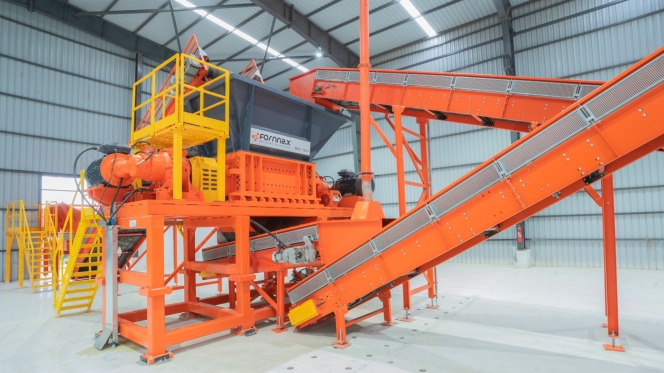
Fornnax has officially launched one of the world's largest integrated hubs for recycling innovation: a New Product Development centre and demo plant spanning over 12 acres. This facility is a critical milestone in the company's strategic vision to become a global leader in recycling solutions by 2030. It is designed to accelerate the advancement of recycling technology through a comprehensive, customer-focused approach.
The centre’s core function is its New Product Development framework, which is built upon a meticulous Gate Review Process. This system ensures precision from conception to completion. The journey begins with market research and ideation from the Sales and Marketing team, followed by a strategic review by the Leadership Team. The Design Team then creates detailed plans that are evaluated by Manufacturing, Service and Safety teams. After final approval, a functional prototype is built and subjected to a rigorous six to eight-month validation phase. The process concludes with design optimisation for mass production, officially launching the equipment for the global market. This method not just upgrades Fornnax's shredders and granulators – enhancing their capacity, energy efficiency and operational availability to 18–20 hours per day – but also validates the equipment for up to 3,000–15,000 hours under real-world conditions

A key feature of the facility is its open-door policy for clients. Customers can bring their specific materials to the demo plant to test equipment performance across various machines and conditions, providing a risk-free environment for informed investment decisions. The centre will also drive research into emerging recycling applications, such as E-waste, cables and lithium-ion batteries, where specialised engineering teams will conduct feasibility studies to design tailored solutions.
Beyond technology, the facility includes an OEM training centre dedicated to developing a skilled workforce. The programme trains operators and maintenance engineers, who gain hands-on experience before being deployed to support Fornnax's customer base. The company will also deliver comprehensive corporate training to domestic and international clients, empowering them with the expertise for optimal plant operation and maintenance. By uniting R&D, testing and training under one roof, Fornnax is establishing a powerful foundation to scale its offerings and lead the next generation of recycling technology.
Jignesh Kundariya, Director and CEO, Fornnax, said, "Innovation in product development is the key to success of becoming a global leader. With this new facility, we now have the speed, flexibility and controlled environment to design, test and validate new technologies in just six to eight months, something that would take significantly 4–5 years at a customer site. Each machine will undergo validation according to global standards, with every critical part and assembly rigorously tested under Engineering Build (EB) and Manufacturing Build (MB) protocols. Our goal is to empower customers with clarity and confidence before they invest. This facility allows them to test their own materials under real-world conditions, compare machines and see results firsthand. It’s not just about selling equipment; it’s about building trust through transparency and delivering solutions that truly work for their unique needs.”
Smithers to Expand Rolling-Resistance Testing Capabilities in China
- By TT News
- November 21, 2025
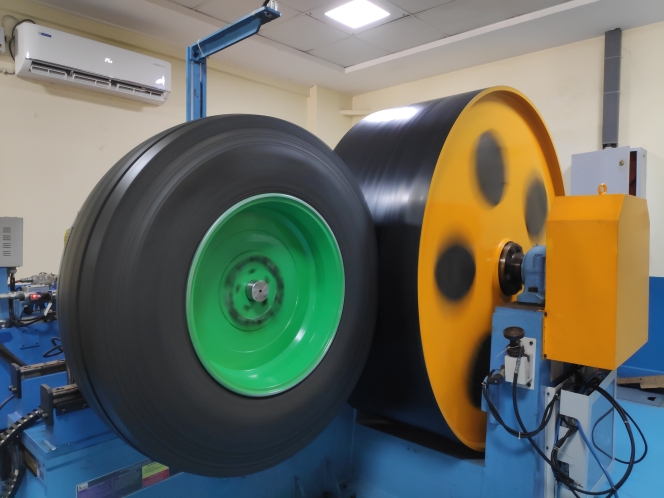
Smithers, the US-based testing and consulting group, is expanding its tyre testing operations in China with three new capabilities designed to better replicate real-world driving conditions. The investment will enhance the company’s rolling-resistance testing at its Suzhou tyre and wheel centre, strengthening its offering to global carmakers and tyre manufacturers.
The new features focus on factors that can influence vehicle energy loss, range, and overall efficiency—a growing concern as regulators tighten standards and EV makers push for longer driving range.
One new capability will allow rolling-resistance testing to be carried out with variations in slip and camber angles for passenger car and light truck tyres. Standard tests are performed at zero degrees, but even small changes in wheel alignment or body movement during real driving can affect energy consumption. The enhanced system lets customers study these effects and refine tyre designs accordingly.
Smithers is also adding high- and low-temperature rolling-resistance testing for truck and bus tyres, an extension of the temperature-controlled testing it introduced for passenger tyres in 2022. The company said demand has risen as manufacturers look to understand how cold weather affects range—a key issue for electric commercial vehicles.
A third new service will allow tyres to be tested together with chassis components such as half-shafts and brake discs. This gives OEMs independent data on how these parts contribute to overall resistance, helping them to identify where energy is being lost and to fine-tune vehicle efficiency.
All three capabilities are expected to be online by 1 December 2025.
“Smithers is seeing increased demand on a global scale for testing of tires and vehicles that more closely mimics real-world conditions,” said Derek Read, Vice President of Asia Pacific / Global Development, Materials Science and Engineering, Smithers. “These new capabilities are strategic investments into the refined, scenario-based testing our clients require to improve both tire and tire-chassis-vehicle system performance.”
Autonomous Robots Transform Continental Retreading Operations
- By TT News
- November 19, 2025
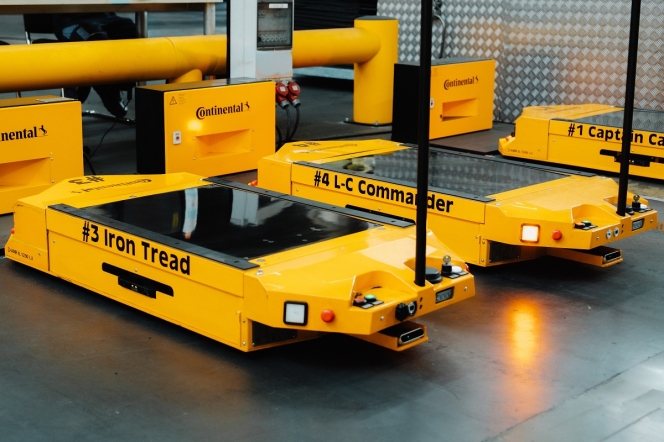
Continental's Hannover-Stöcken plant is pioneering a new era in sustainable manufacturing by seamlessly integrating advanced robotics into its core operations. Since their deployment in March 2025, a team of seven autonomous mobile robots (AMRs) has become the central nervous system for material transport, fundamentally reshaping the workflow for retreading truck and bus tyres.
This shift to automation has profoundly changed the human role on the production floor. Employees, once tasked with the physically strenuous job of manually moving heavy tyres using cranes and trolleys, are now focused on more cognitively demanding responsibilities. Their expertise is directed towards machine setup, process oversight and meticulous quality control, making their work more ergonomic and skilled.
The AMRs operate with sophisticated independence, navigating the production hall using a fusion of sensors, 360-degree cameras and AI-driven software. They efficiently ferry ‘green’ tyres between critical stages: from the building machine, where fresh rubber is applied, to the curing presses for vulcanisation and finally towards inspection. This automated coordination is digitally linked to the plant's order system, allowing for dynamic routing to optimise workflow and manage capacity.
This initiative is a cornerstone of Continental's global strategy to modernize tyre production through digitalisation and smart automation. The success in Hannover has already inspired the rollout of similar robotic solutions across the company's international network, from North America to Asia. The move aligns perfectly with the plant's sustainable mission, which is the ContiLifeCycle process itself. This process breathes new life into used tyre casings by carefully inspecting them, applying new tread rubber and vulcanising them to create a product that performs like new. The environmental benefit is substantial, as up to 70 percent of the original tyre's material is reused, significantly conserving resources.
The human element was crucial to the project's success. Continental ensured widespread employee acceptance through comprehensive training and even involved the workforce in christening the robots with creative names. This thoughtful approach has cemented the AMRs not as mere machines but as valued teammates in a shared mission to make tyre production more efficient, sustainable and future-ready.
Felix Hantelmann, head of the ContiLifeCycle plant, said, “Self-driving robots have been supporting our production workflow for six months now. They handle simple, repetitive transport tasks such as moving a tyre from one point to another. The robots are directly connected to our digital order system, so they know exactly where to go and how to coordinate with each other to get there. They are a valuable addition to our daily operations and help create a safe, efficient and ergonomically optimised production environment.”
Continental Deploys Vacuum Tech For Real-Time Tyre Wear Particle Analysis
- By TT News
- November 18, 2025
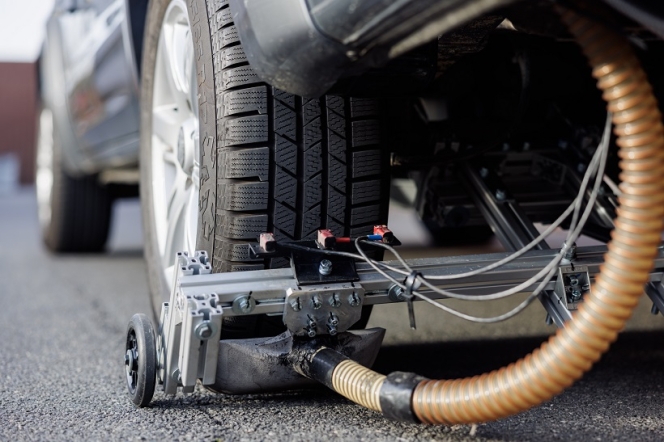
Continental's leadership in reducing tyre wear is fundamentally driven by its pioneering research into how particles are generated. A pivotal element of this strategy is the recently concluded OLRAP project, a collaboration with the Technical University of Braunschweig that broke new ground in real-world particle analysis. The research team engineered a complex experimental vehicle, outfitting it with a custom vacuum system and sensitive particle sensors. This innovative setup enabled the real-time collection and analysis of airborne particles directly at their source – the rolling tyre – under actual driving conditions. The resulting data, which for the first time correlates specific driving dynamics like aggressive acceleration and hard cornering with particle emissions, provides an unprecedented understanding of wear patterns.
This deep, data-driven insight is what directly fuels Continental's product development. By knowing precisely how and when wear occurs, engineers can make targeted optimisations to tread patterns and rubber compounds. The objective is to systematically design tyres that shed less material, thereby directly reducing their environmental footprint from abrasion. This development process rigorously maintains the critical safety and performance standards that drivers demand.
The tangible success of this research-to-development pipeline is confirmed by independent analysis, which shows Continental tyres abrade 11 percent less material than the competitor average. Furthermore, this proactive research and development strategically prepares the company for upcoming regulations like the Euro 7 standard, which will impose limits on tyre wear emissions. Beyond its own laboratories, Continental extends this commitment through cross-industry efforts, co-chairing the Tire Industry Project and contributing to public initiatives aimed at capturing tyre particles from road runoff. Through this integrated approach, Continental is leveraging fundamental scientific discovery to create more sustainable mobility solutions.


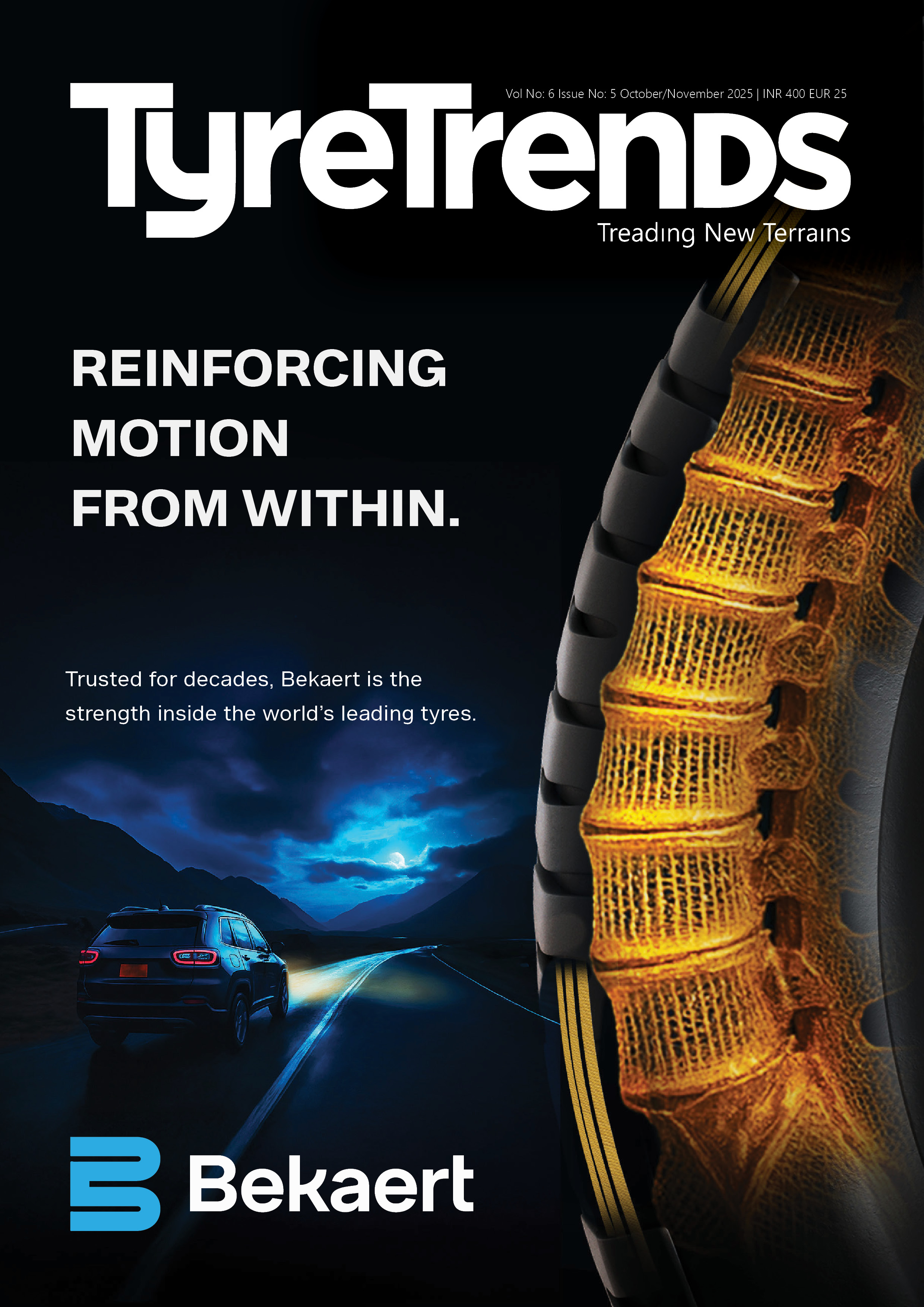




Comments (0)
ADD COMMENT